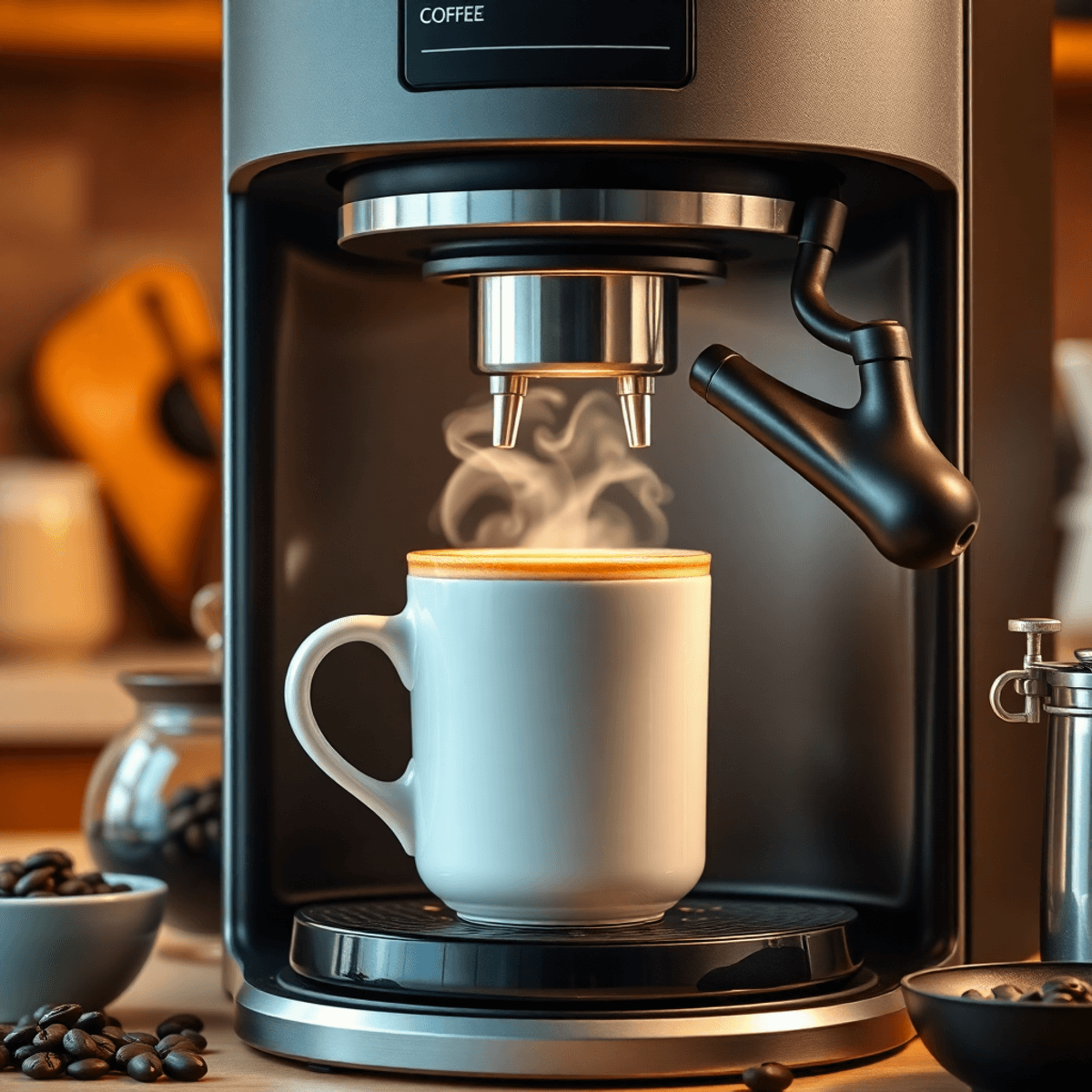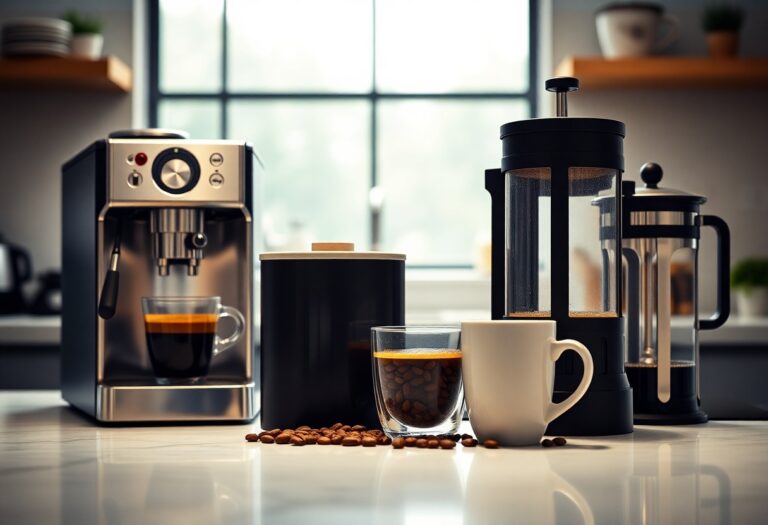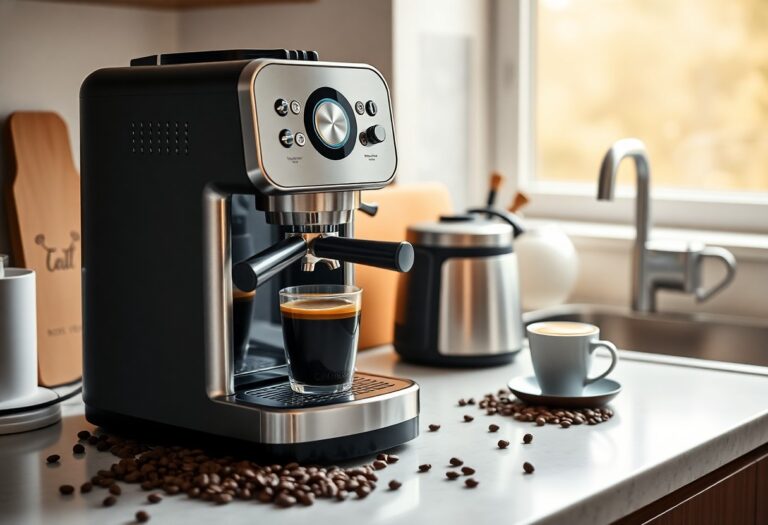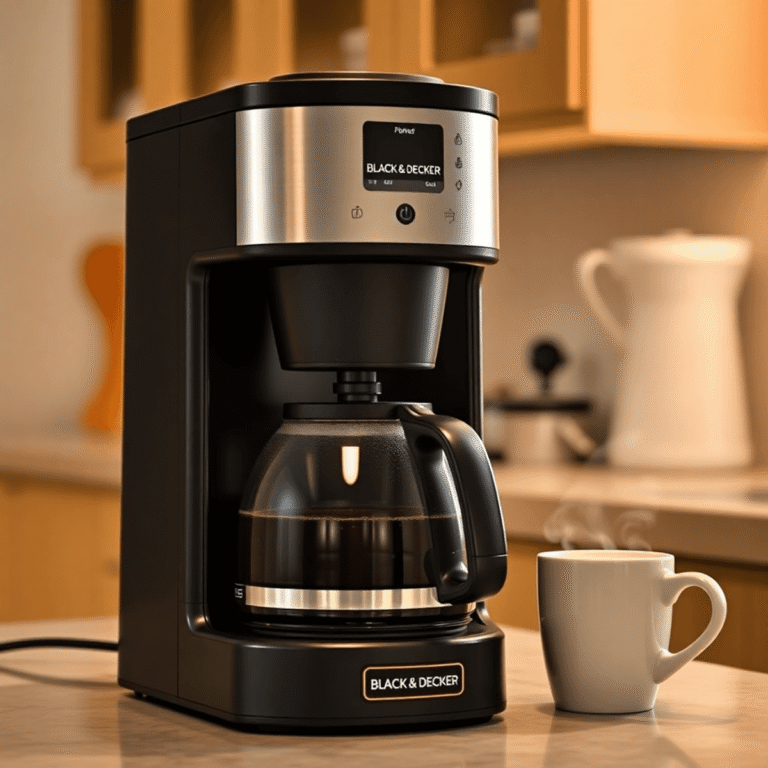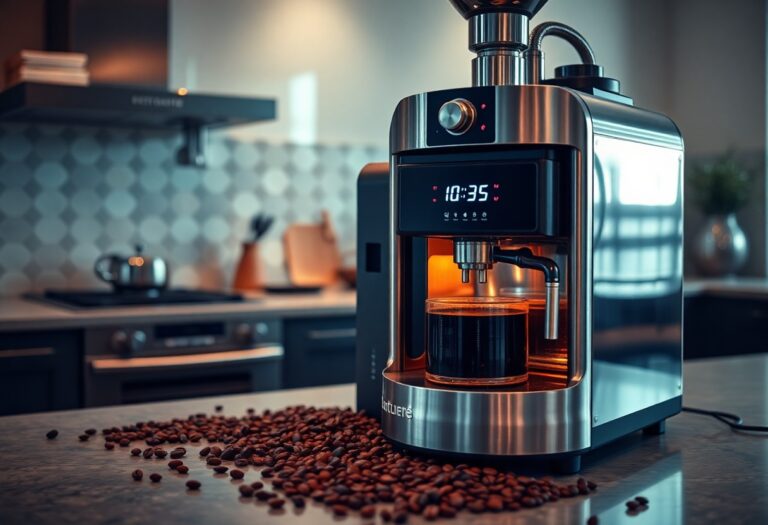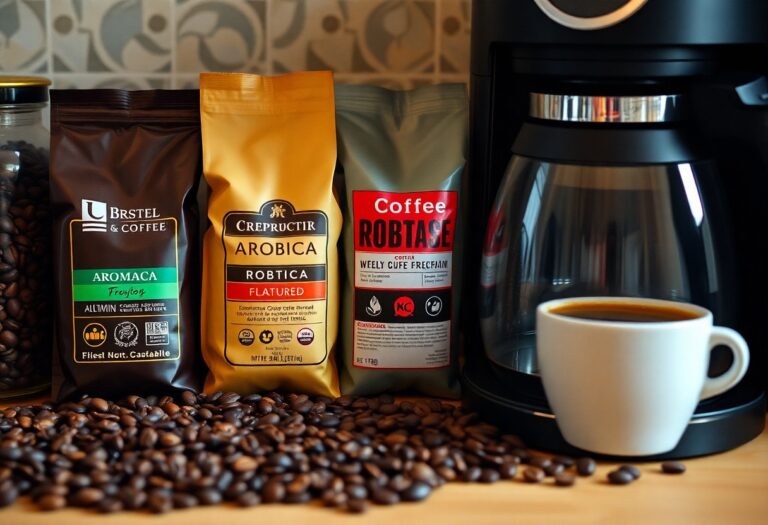How Does a Coffee Machine Work: Complete Mechanism Guide
Understanding the Coffee Machine Mechanism
Coffee machines are an essential part of our daily routine. They help us start our mornings off right and offer a soothing break during busy days. Whether at home or in the office, these machines have become indispensable. By understanding how coffee machines function, we can truly appreciate the artistry behind each cup and make better decisions when choosing a coffee maker that suits our preferences.
This article aims to provide a detailed overview of the various mechanisms used in different types of coffee machines. It is designed for both coffee enthusiasts interested in learning more about the brewing process and everyday users seeking ways to enhance their coffee experience.
Why Knowing Your Coffee Machine Matters
Familiarizing yourself with your specific coffee machine model can lead to significant improvements in both taste and efficiency. Here are a few reasons why this knowledge is beneficial:
- Optimizing Brewing Techniques: Each coffee machine has its own unique brewing method. By understanding how your machine works, you can experiment with different variables such as water temperature, brew time, and coffee-to-water ratio to achieve your desired flavor profile.
- Proper Maintenance: Regular maintenance is crucial for keeping your coffee machine in optimal condition. Knowing how to clean and descale your machine correctly will not only prolong its lifespan but also ensure that every cup of coffee tastes fresh and free from any lingering odors or flavors.
- Troubleshooting Issues: If you encounter any problems with your coffee machine, having a basic understanding of its components can help you troubleshoot minor issues on your own. This saves you time and money by avoiding unnecessary repairs or replacements.
Resources for Specific Coffee Machine Models
Here are some helpful resources tailored to specific coffee machine models:
- Natural cleaning method using vinegar – A simple yet effective way to maintain your machine’s performance.
- Maintenance instructions for K-cup coffee machines – Step-by-step guide on how to properly care for your K-cup brewer.
- Operating guide for Hamilton Beach coffee machines – Detailed instructions on using various features of Hamilton Beach models.
- Maintenance guide for Breville coffee machines – Tips on descaling Breville machines to prevent scaling issues.
- Essential maintenance tips for all types of coffee machines – General advice applicable to any brand or model.
By leveraging these resources alongside this article, you’ll be well-equipped to understand and care for your specific type of espresso machine or drip brewer.
1. Drip Coffee Makers: The Classic Choice
Drip coffee makers offer a classic and straightforward way to brew your morning cup of joe. Here’s how they work:
1. Water Flow
- Cold water from the reservoir enters a heating element where it is gradually heated until reaching boiling point.
- As water boils, bubbles form and push the hot water up through a tube and a shower head onto the ground coffee in the filter basket.
2. Filter Basket
- The filter basket plays a crucial role in the brewing process by allowing water to evenly extract flavors from the coffee grounds.
- To enhance your brewing experience, consider using freshly ground coffee beans and adjusting the grind size to control extraction levels.
3. Absence of Mechanical Pumps
- Unlike espresso machines that rely on pumps to generate high pressure for extraction, drip coffee makers do not have mechanical pumps.
- The absence of pumps means that drip machines depend on the natural boiling action of water to move it through the system, impacting brew strength.
By understanding how drip coffee makers function, you can appreciate the simplicity behind their operation and master the art of brewing a delicious cup of coffee at home. Additionally, it’s important to maintain your machine for optimal performance. Regular cleaning and descaling are essential parts of this maintenance routine. If you’re using a Cuisinart model, you might find these programming setup instructions helpful.
2. Espresso Machines: Mastering Pressure Brewing
Espresso machines are designed to brew coffee using a method known as pressurized brewing. This process involves forcing hot water through finely ground coffee beans at high pressure, typically around 9 bars. The significance of this high pressure cannot be overstated, as it plays a crucial role in extracting the rich flavors and aromas locked within the coffee beans.
Understanding the Pressurized Brewing Process
In an espresso machine, water is heated to the optimal brewing temperature and then pumped through the coffee grounds at high pressure. This combination of temperature and pressure extraction is what sets espresso apart from other brewing methods. The result is a concentrated shot of coffee with a thick crema on top—a hallmark of a well-extracted espresso.
Types of Pumps in Espresso Machines
One key component that contributes to maintaining consistent pressure during extraction is the pump used in the espresso machine. There are two main types of pumps commonly found in espresso machines: vibratory pumps and rotary vein pumps.
Vibratory Pumps
Vibratory pumps are often found in entry-level or compact espresso machines due to their smaller size and lower cost. They work by rapidly vibrating a diaphragm to create suction and push water through the system. While vibratory pumps can achieve the necessary pressure for brewing, they may struggle with maintaining stability over longer extraction times or when multiple shots are brewed back-to-back.
Rotary Vein Pumps
Rotary vein pumps, on the other hand, are typically found in higher-end or commercial-grade espresso machines. These pumps use rotating gears to move water through the system, providing greater control over flow rate and pressure. This makes them ideal for busy cafes or settings where consistent quality is paramount.
Boiler Variations and Their Impact on Temperature Stability
Another critical aspect of espresso machine design that affects brewing performance is the type of boiler used. There are three main types of boilers found in espresso machines: single boilers, heat exchanger boilers, and dual boilers.
Single Boilers
Single boiler systems use one boiler for both brewing and steaming functions. While this design can be space-efficient, it often leads to temperature fluctuations between shots if not managed carefully.
Heat Exchanger Boilers
Heat exchanger boilers have separate chambers for brewing and steaming, allowing for simultaneous operation without compromising temperature stability. However, achieving precise temperature control may require additional mechanisms such as Pressure Stats or PID (Proportional-Integral-Derivative) controllers.
Dual Boilers
Dual boiler systems feature independent boilers dedicated solely to brewing and steaming tasks. This setup offers maximum flexibility in terms of temperature management but can also be more complex and costly.
By understanding these key elements—pressurized brewing, pump types, and boiler variations—you’ll gain valuable insights into how different factors influence the performance of an espresso machine. Whether you’re considering purchasing one for home use or simply curious about what goes into making that perfect cup at your favorite café!
3. Other Popular Coffee Brewing Methods and Their Mechanisms
Coffee enthusiasts often explore a variety of brewing techniques beyond drip and espresso machines. Each method offers unique mechanisms that influence flavor extraction, convenience, and user experience.
French Press Brewing Process
The French press uses an immersion brewing technique. Ground coffee is fully submerged in hot water for several minutes, allowing flavors to steep thoroughly. The key mechanical component is the plunger mechanism:
- After steeping, you press down the plunger fitted with a fine metal mesh filter.
- This action separates the brewed coffee from the grounds by pushing them to the bottom.
- The mesh filter allows oils and fine particles to pass through, creating a rich and robust cup with fuller body compared to drip coffee.
The simplicity of this mechanism requires no electrical parts or pumps, relying entirely on manual control. This hands-on approach appeals to those who appreciate a tactile connection with their brew process. For those interested in mastering this technique, a comprehensive guide on how to use a French press coffee machine can be quite beneficial.
Single-Serve Pod Machines Operation
Single-serve pod machines offer remarkable convenience through pre-packaged coffee capsules or pods. Their mechanism involves:
- Piercing the capsule upon insertion.
- Forcing hot water at moderate pressure through the pod to extract coffee quickly.
- Delivering a consistent portion size with minimal cleanup.
This system reduces brewing time drastically while maintaining ease of use. However, limited flavor diversity is a potential drawback since users are confined to available pod varieties. Additionally, pod waste raises environmental concerns for some consumers.
Moka Pot Mechanism
Moka pots brew coffee using steam pressure generated on stovetops. The process resembles espresso production but has distinct differences:
- Water in the bottom chamber heats up until steam pressure builds.
- Pressure forces hot water upward through a funnel into a middle basket containing finely ground coffee.
- Brewed coffee collects in the top chamber ready for pouring.
Unlike electric espresso machines, moka pots lack pumps or electronic temperature controls. Steam pressure is lower than that in espresso machines but sufficient to produce a strong, concentrated brew with characteristic boldness and slight bitterness.
These methods illustrate diverse engineering approaches within home coffee brewing—ranging from manual immersion presses like the French press, which you can learn more about in our guide on how to make coffee without a machine, to automated single-serve pods and stovetop pressure devices like moka pots—each catering to different preferences and lifestyles in your journey through How Does a Coffee Machine Work: Complete Mechanism Guide.
4. Electrical and Mechanical Engineering Aspects in Coffee Machines
Role of Resistive Heating Coils
Coffee machines integrate resistive heating coils that are embedded in aluminum components. These coils play a critical role in swiftly and effectively heating water within the machine. The use of aluminum allows for efficient heat conduction, ensuring rapid heating to the optimal temperature for brewing.
Importance of Safety Features
Safety is paramount in coffee machine design, with the inclusion of sensors and fuses to avert potential hazards like overheating. Sensors monitor temperature levels, preventing them from exceeding safe limits, while fuses act as protective measures against electrical malfunctions. These features guarantee user safety during operation and contribute to the longevity of the appliance.
This section highlights the essential elements of electrical and mechanical engineering within coffee machines, emphasizing their significance in ensuring both operational efficiency and user safety. However, regular maintenance such as descaling is crucial for preserving these functionalities. For a comprehensive guide on how to descale your coffee machine, refer to this complete decalcification guide. Additionally, understanding the right ratios of vinegar needed for cleaning can significantly enhance your maintenance routine. You can find detailed information about this in our article on how much vinegar to clean a coffee machine.
5. Maintenance Tips for Long-lasting Performance
Maintaining your coffee machine is essential to preserve its performance and the quality of your brew. Regular coffee machine cleaning should be part of your routine, targeting several key components:
- Filters: Coffee oils and fine grounds accumulate in the filter basket, affecting extraction and flavor clarity. Remove and rinse filters after each use or wash with mild detergent weekly.
- Water Reservoir: Stagnant water breeds bacteria and mineral buildup. Empty and clean the reservoir regularly to ensure fresh water flows through your machine.
- Drip Trays and Carafes: Residues from brewed coffee can cause unpleasant odors and flavors. Clean these parts thoroughly with warm soapy water.
For instance, if you own a Black & Decker model, you can follow this cleaning guide for effective maintenance. Similarly, if you’re using a Mr. Coffee machine, this maintenance guide will be helpful.
Mineral deposits from hard water reduce heating efficiency and clog internal pathways over time. The descaling process addresses this issue by dissolving limescale buildup inside boilers, pipes, and heating elements. Steps for effective descaling include:
- Choose an appropriate descaling solution such as citric acid or a commercial product specifically designed for coffee machines.
- Follow manufacturer instructions on dilution ratios and application methods.
- Run the descaling solution through a brewing cycle, allowing it to soak if recommended.
- Flush the machine thoroughly with clean water afterward to remove any residue.
If you own a Keurig coffee machine, you might find this complete step-by-step guide useful for the descaling process.
Regular maintenance not only protects your investment but ensures every cup of coffee tastes as intended—fresh, balanced, and aromatic without interference from old oils or mineral deposits.
Understanding Coffee Brewing Technology: A Key to Enjoying Great Coffee at Home!
This section provides a recap of how different types of coffee machines operate based on their unique mechanisms discussed earlier in this guide. For instance, if you’re using a Keurig, our complete operating guide will help you navigate its functionalities. Additionally, maintaining your machine is crucial for optimal performance. You can find useful tips in our ultimate maintenance guide for Keurig users, or explore this DIY method for cleaning any coffee machine with vinegar.
Moreover, each coffee brewing machine comes with its own set of cleaning and maintenance requirements. For example, if you own a Ninja coffee machine, check out our guide on how to clean my ninja coffee machine for personalized maintenance tips.
Finally, understanding the perfect ratios of coffee to water can significantly enhance your brewing experience. We provide insights on how much coffee to put in a coffee machine for perfect ratios.
Having knowledge about these technologies empowers users to make informed choices when selecting a suitable machine for their needs while also appreciating the craftsmanship behind each brew they enjoy.

